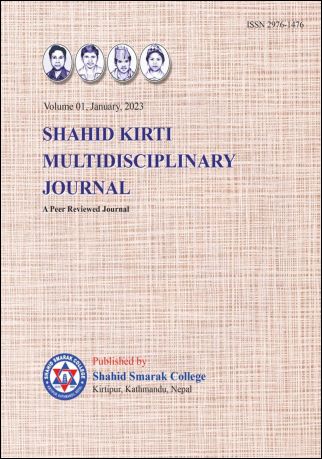Changing Livelihood, and Culture in Pattharkatta (Kushbadiya) Community of Nepal
DOI:
https://doi.org/10.3126/skmj.v1i1.60505Keywords:
Culture, livelihood, nomad, strategy, exchangeAbstract
Pattharkatta (Kusbadiya), one of the endangered communities of Nepal, have been using multiple livelihood strategies from carving grinding stone to wage labour. In course of selling and carving grinding stones, they still practice semi-nomadic characteristics like tribal peoples’ routine of periodically moving from one place to another. Due to the lack of their own registered land, they were compelled to many livelihood strategies because the traditional occupation was replaced by new technology. The decline of their traditional occupation and landlessness generate questions about the traditional livelihood and culture strategies of the community. What are the current livelihood practices of the Pattharkatta? How do they negotiate to change livelihood and culture? What are socio-cultural changes they experienced? Nowadays, they have settled in some public places near the road, rivers, and slum areas of the municipality. Some of them temporally migrated to the near market and road where they make and sell grinding stones. Some of them migrated to Kathmandu and temporally settled along the ring road at Balaju Bus Park, Kalanki, Chahabil, Basundhara, and Koteswor.
By employing a mixed method design, the researcher collected information through observations and interviews with the selected informants in Kapilbastu and Kathmandu. Descriptive and narrative analysis of the data explored that they were temporarily settled in a public land by making temporary huts in public lands or lands allocated by the local bodies. Few of them continued in traditional occupations- making grinding stones, making brooms and ropes using jute fibers and rest of them changed their livelihood strategies and culture.




